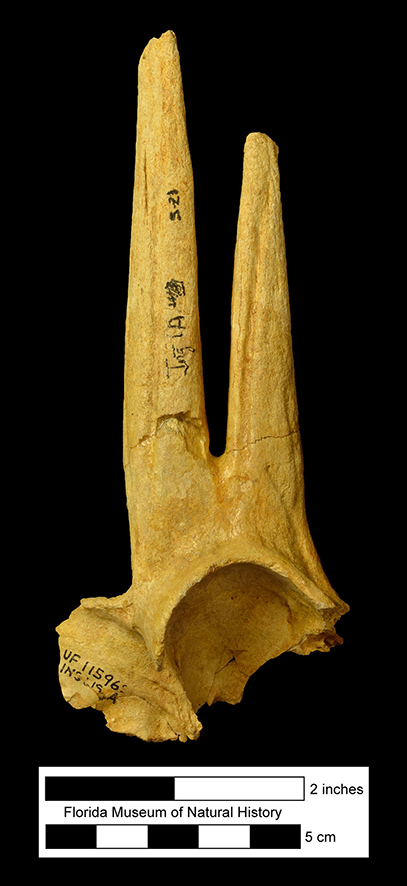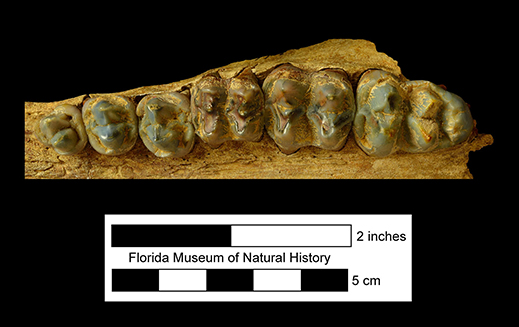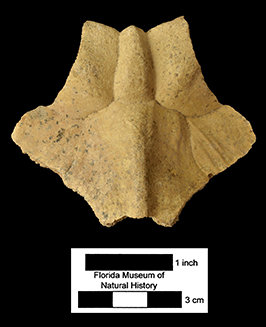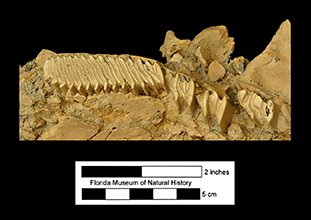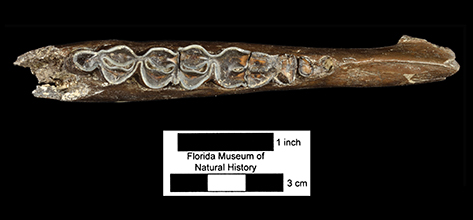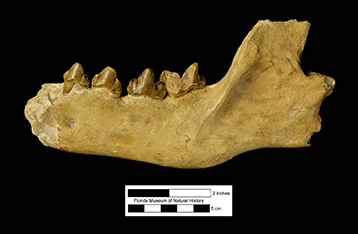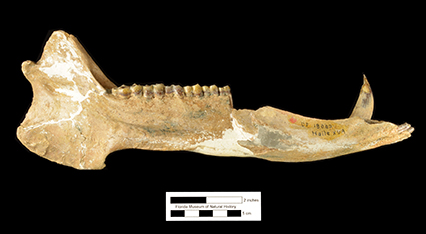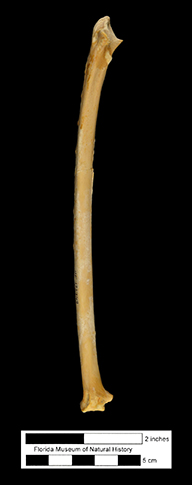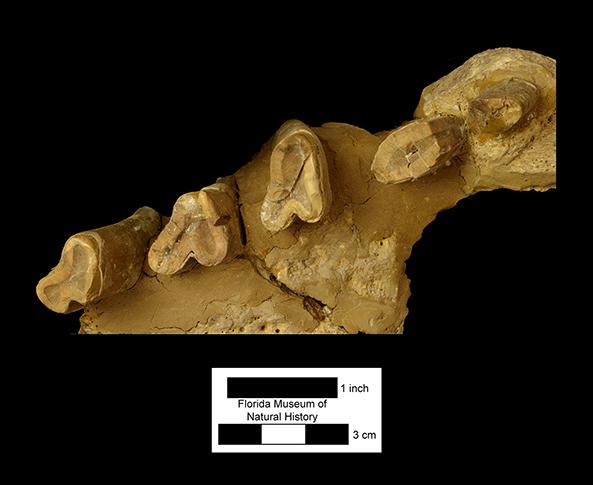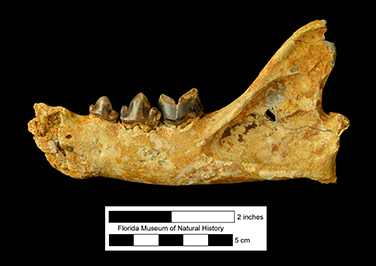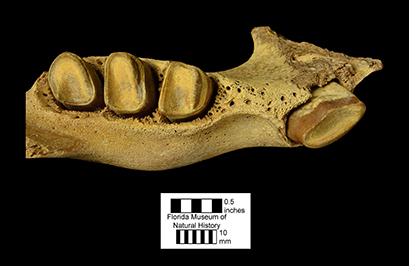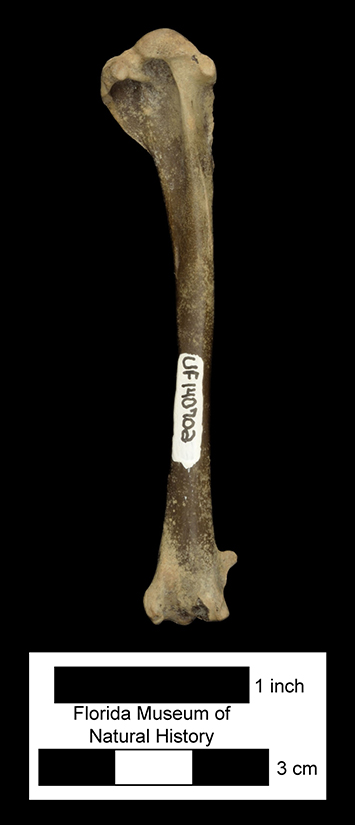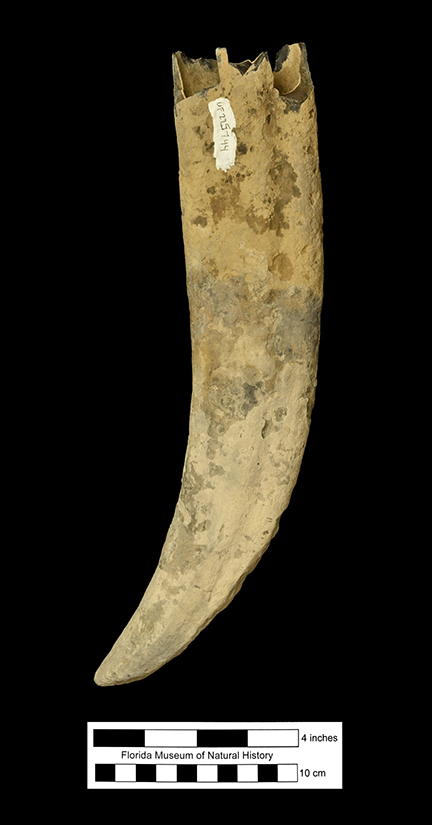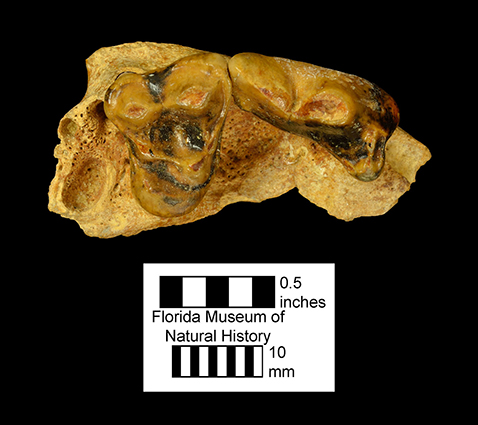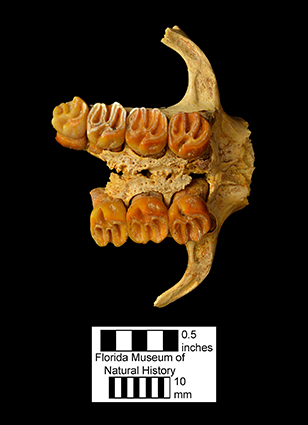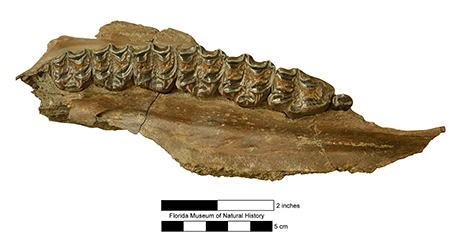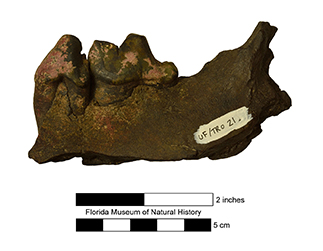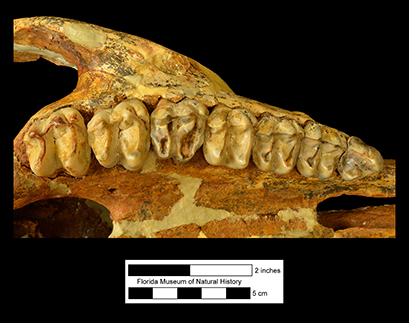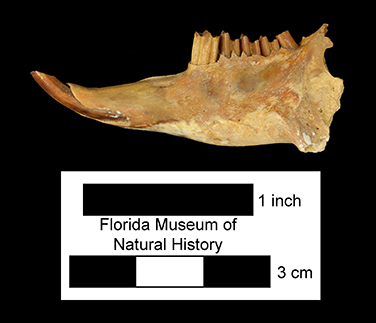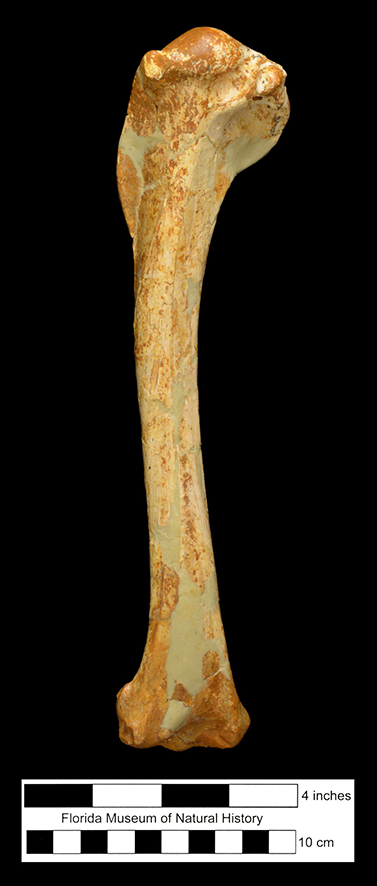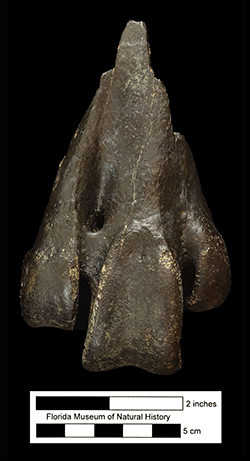
Defining taxon: first appearance of the rodent genera Mimomys, Ogmodontomys, and Ophiomys south of 55° N latitude (Bell et al., 2004). Note that none of these genera are known from Florida.
Basis of name: The Blancan NALMA takes its name from the Blanco Formation, a sedimentary rock unit found in Crosby and Lubbock counties in the southern Texas Panhandle. The Blancan is represented by many hundreds individual vertebrate fossil sites distributed from Canada to Central America (Bell et al., 2004). There are about 100 Blancan sites in Florida (Table 1); about half from four counties in southwestern Florida (Charlotte, Sarasota, Hendry, and DeSoto). The boundaries of the Blancan and its correlation with the Pliocene or Pleistocene epochs of the geologic time scale have varied considerably since it was first named by Wood et al. (1941). The Blancan is divided into two subintervals: the Bl1 from 4.75 to 2.6 million years ago; and the Bl2 from 2.6 to 1.6 million years ago. Under this scheme, the Bl1 correlates with most of the Pliocene Epoch while the Bl2 is very early Pleistocene under the current geologic time scale.
Index species for the Bl1 in Florida: none
Significant Bl1 localities and faunas in Florida: Macasphalt Shell Pit, Units 10-11; Richardson Road Shell Pit (= Quality Aggregates and SMR shell pits), Units 10-11; Hickey Creek
Note: All vertebrate fossil sites of the Bl1 interval in Florida derive from marine deposits, and no terrestrial mammals are known. Typical fossils of this interval are sharks, rays, bony fish, seals, walrus, dugongs, and whales. Most are species continuing from the late Hemphillian NALMA. The Bl1 does include the earliest known occurrences in Florida of Carcharodon carcharias and the last known occurrences of the sharks Carcharocles megalodon, Carcharodon hastalis, and Hemiprisitis serra, the baleen whale Balaenoptera cortesii (= Balaenoptera floridana), the walrus Ontocetus emmonsi, and the dugong Corystosiren varguezi.
Index species for the Bl2 in Florida: Chelydra floridana, Phalacrocorax filyawi, Titanis walleri, Megalonyx leptostomus, Paramylodon garbanii, Sigmodon minor, Sigmodon medius, Sigmodon curtisi, Ondatra idahoensis, Castor californicus, Peromyscus hagermanensis, Erethizon poyeri, Erethizon kleini, Borophagus diversidens, Canis lepophagus, Trigonictis macrodon, Chasmaporthetes ossifragus, Platygonus bicalcaratus, Hemiauchenia blancoensis, Hemiauchenia gracilis, Capromeryx arizonensis, Nannippus peninsulatus, Tapirus lundeliusi, and Rhynchotherium praecursor
Significant Bl2 localities and faunas in Florida: Haile 7C, 7G, and 15A; Santa Fe River 1, 4, and 8; Macasphalt Shell Pit, Unit 4; Desoto Shell Pit; Inglis 1A and 1C; Withlacoochee River 1A
Characteristic species for the Blancan in Florida: Trachemys platymarginata, Anabernicula gracilenta, Melagris anza or M. leopoldi, Dasypus bellus, Holmesina floridanus, Pachyarmatherium leiseyi, Paramylodon harlani, Eremotheirum eomigrans, Phugatherium dichroplax, Canis edwardii, Arctodus pristinus, Smilodon gracilis, Xenosmilus hodsonae, Hemiauchenia macrocephala, Equus (Plesippus) sp., Tapirus haysii, Cuvieronius tropicus, and Mammut americanum.
In addition to these extinct species, a large number of common living amphibian, reptile, bird, and mammal species first appear in Florida during the Blancan. Among these are the frogs Hyla cinera, Rana catesbeiana, and Rana grylio; the turtles Kinosternon baurii, Kinosternon subrubrum, Sternotherus minor, Deirochelys reticularia, Pseudemys concinna, and Gopherus polyphemus; the snakes Coluber constrictor, Drymarchon couperi, Masticophis flagellum, Pantherophis guttatus, Thamnophis sirtalis, Heterodon platirhinos, and Agkistrodon piscivorus; the birds Anas platyrhyncos, Branta canadensis, Zenaida macroura, Grus canadensis, Bubo virginianus, Coragyps atratus, and Aphelocoma coerulescens; and the mammals Sylvilagus floridanus, Sciurus carolinensis, Scalopus aquaticus, Blarina carolinensis, Lontra canadensis, Spilogale putorius, Lynx rufus, and Odocoileus virginianus.
Gallery of Blancan Florida Fossils
Major extinctions: Three long-lived clades of mammals became extinct near or at the end of the Blancan: the hipparion (three-toed) horses, the borophagine canids, and the dugongs.
Comments: The apparent large number of first appearances of terrestrial and freshwater vertebrate species at the start of the Bl2 in Florida is likely in part an artifact of the absence of a record of terrestrial species from the Bl1. The Bl1 is generally recognized as an interval of relatively warm global climate and high sea levels. Most if not all of Florida would have been submerged during the Bl1, the last time this is known to have occurred in geologic history.
The formation of a complete “land bridge” between South and North America took place during the middle of the Blancan NALMA because of tectonic forces. This had profound effects in both the marine and terrestrial realms. There were major changes in oceanic currents and circulation. Populations of tropical marine species were separated on either side of the Panamanian Isthmus. While a limited number of terrestrial species managed to disperse between South and North America prior to the formation of the Panamanian Isthmus, its development made this much easier. About 20 different genera of mammals dispersed from South to North America; of these about 11 reached Florida, 9 first appearing during the Blancan (Dasypus, Pachyarmatherium, Holmesina, Glyptotherium, Eremotherium, Paramylodon, Desmodus, Neochoerus, and Erethizon). The giant flightless bird Titanis is another immigrant with a South American ancestry. At the same time, North American mammals were dispersing into South America, including one-toed horses, tapirs, peccaries, llamas, gomphotheres, deer, squirrels, rabbits, shrews, skunks, otters, weasels, raccoons, wolves, foxes, bears, and both conical and sabertoothed cats.
Blancan terrestrial vertebrate assemblages from Florida are easily distinguished from those of the preceding Hemphillian NALMA by the presence of armadillos, glyptodonts, the giant sloth Eremotherium, capybara, the one-toed horse Equus, and the small pronghorn Capromeryx, and by the absence of rhinos, the hipparions Neohipparion and Pseudhipparion, and the three-horned dromomerycid and protoceratid artiodactyls. Most mammalian genera shared between the Hemphillian and Blancan are different at the species level. Faunas from the succeeding Irvingtonian NALMA are more similar to those of the Blancan in Florida, particularly those of the early Irvingtonian. Presence of mammoth, the early wolf Canis armbrusteri, the vole Microtus and/or the lemming Synaptomys places a fauna in the Irvingtonian, while presence of hipparion horses (Nannippus peninsulatus and/or Cormohipparion emsliei) or the dwarf llama Hemiauchenia gracilis indicate a Blancan fauna. The llama Palaeolama first appears in the latest Blancan but in very small numbers; it only becomes common in the Irvingtonian. But if these or other rarer index species are absent, then species-level identification of the sloth Megalonyx or the cotton rat Sigmodon are the best ways to distinguish Florida Blancan and Irvingtonian localities. Late Hemphillian, Blancan, and Irvingtonian faunas in Florida also have different species of the freshwater turtle Trachemys: Trachemy inflata in the late Hemphillian, Trachemys platymarginata in the Blancan, and Trachemys scripta in the Irvingtonian.
Table 1. Number of Pleistocene vertebrate fossils sites known from counties in Florida, subdivided by land mammal age.
| Rancholabrean | Irvingtonian | Blancan | |
| ALACHUA |
72 |
5 |
5 |
| BREVARD |
9 |
4 |
0 |
| BROWARD |
1 |
0 |
0 |
| CHARLOTTE |
3 |
8 |
16 |
| CITRUS |
18 |
1 |
16 |
| COLLIER |
0 |
1 |
1 |
| COLUMBIA |
60 |
0 |
12 |
| DADE |
3 |
0 |
0 |
| DE SOTO |
17 |
1 |
8 |
| DIXIE |
8 |
0 |
0 |
| DUVAL |
3 |
0 |
0 |
| FLAGLER |
5 |
0 |
0 |
| GILCHRIST |
6 |
1 |
1 |
| GLADES |
3 |
0 |
1 |
| HARDEE |
21 |
1 |
0 |
| HENDRY |
5 |
4 |
4 |
| HERNANDO |
1 |
0 |
0 |
| HIGHLANDS |
0 |
0 |
1 |
| HILLSBOROUGH |
7 |
15 |
0 |
| INDIAN RIVER |
6 |
0 |
0 |
| JACKSON |
7 |
0 |
0 |
| JEFFERSON |
11 |
0 |
0 |
| LAFAYETTE |
3 |
1 |
0 |
| LAKE |
3 |
0 |
0 |
| LEE |
2 |
0 |
2 |
| LEON |
0 |
0 |
1 |
| LEVY |
45 |
1 |
2 |
| LIBERTY |
0 |
0 |
1 |
| MADISON |
1 |
0 |
1 |
| MANATEE |
9 |
1 |
0 |
| MARION |
59 |
0 |
2 |
| MARTIN |
2 |
0 |
0 |
| NASSAU |
3 |
0 |
0 |
| OKEECHOBEE |
0 |
0 |
1 |
| ORANGE |
1 |
1 |
0 |
| PALM BEACH |
2 |
3 |
0 |
| PINELLAS |
19 |
0 |
1 |
| POLK |
5 |
20 |
0 |
| PUTNAM |
9 |
0 |
3 |
| SARASOTA |
16 |
3 |
19 |
| SEMINOLE |
5 |
0 |
0 |
| ST. JOHNS |
4 |
0 |
0 |
| ST. LUCIE |
3 |
0 |
0 |
| SUMTER |
6 |
1 |
1 |
| SUWANNEE |
12 |
0 |
1 |
| TAYLOR |
31 |
0 |
0 |
| VOLUSIA |
6 |
0 |
0 |
| WAKULLA |
10 |
0 |
0 |
| WALTON |
1 |
0 |
0 |
| total |
523 |
72 |
100 |
Sources
- Text Author: Richard C. Hulbert Jr.
- Image Gallery: Natali Valdes
- Original Publication Date: June 18, 2015
- Last Edited On: August 2, 2016
References
Bell, C. J., E. L. Lundelius Jr, A. D. Barnosky, R. W.Graham, E. H. Lindsay, D. R. Ruez Jr., H. A. Semken Jr., S. D. Webb, and R. J. Zakrzewski. 2004. The Blancan, Irvingtonian, and Rancholabrean mammal ages. Pp. 232–314 in M. O. Woodburne (ed.), Late Cretaceous and Cenozoic Mammals of North America. Columbia University Press New York.
Hulbert Jr., R. C. (ed.) 2001. The Fossil Vertebrates of Florida. University Press of Florida: Gainesville.
Hulbert Jr., R. C. 2010. A new early Pleistocene tapir (Mammalia: Perissodactyla) from Florida, with a review of Blancan tapirs from the state. Bulletin of the Florida Museum of Natural History 49(3):67-126.
Morgan, G. S. and R. C. Hulbert, Jr. 1995. Overview of the geology and vertebrate biochronology of the Leisey Shell Pit local fauna, Hillsborough County, Florida. Bulletin of the Florida Museum of Natural History 37:1-92.
Webb, S. D. 1974. Chronology of Florida Pleistocene mammals. Pp. 5-31 in S. D. Webb (ed.), Pleistocene Mammals of Florida. University of Florida Press, Gainesville.
Wood, H. E., et al. 1941. Nomenclature and correlation of the North American continental Tertiary. Bulletin of the Geological Society of America 52(1):1-48.
